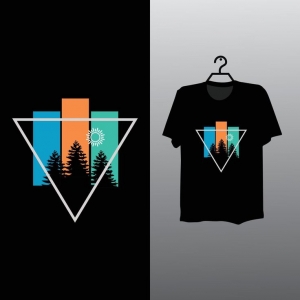Have you ever hosted a party? You plan everything the music, the food, the decorations to make sure your guests have a wonderful time. But the only way to truly know if you succeeded is to see the party through their eyes. Are they enjoying the conversation? Can they easily find the drinks? Is the music at the right volume?
Running a business is a lot like hosting that party. You’ve built a great product or service, but the customer’s experience interacting with your brand is what determines if they’ll stay, enjoy themselves, and come back.
Identifying gaps in that experience can feel like a massive task. But what if there was a simple, straightforward way to see your business exactly as your customers do? There is, and you can start today.
Why Seeing Through Your Customer's Eyes Changes Everything
Before we dive into the "how," let's talk about the "why." When you actively seek to understand your customer's experience, you unlock incredible benefits. It's not just about fixing problems; it's about building a better business from the outside in.
- It Builds Loyalty: A smooth, intuitive experience makes customers feel valued and understood. This builds trust and turns one-time buyers into lifelong advocates for your brand.
- It Creates Clarity: Understanding how customers interact with your business helps you see what's working and what's not. It removes guesswork and allows you to make confident, informed decisions.
- It Drives Growth: Happy customers are your best marketers. A positive experience leads to better reviews, more word-of-mouth referrals, and a stronger reputation in your industry.
The Power of the Customer "Walk-Through"
The easiest way to find gaps in your customer experience is to become the customer yourself. This simple exercise involves walking through the exact steps a person would take when interacting with your company. It’s a foundational element of a process professionals call journey mapping, but you don’t need complex software or a big budget to get started.
You just need a fresh perspective and a willingness to see what your customers see. This walk-through will give you a firsthand look at the moments of delight and the points of friction that shape their perception of your brand.
Your Step-by-Step Guide to a CX Walk-Through
Ready to try it? Grab a notebook or open a new document and follow these simple steps. It's an insightful exercise that will reveal more than you expect.
Step 1: Choose a Customer and a Goal
First, decide who you're going to be. Are you a brand-new lead who just discovered your company on social media? Or are you an existing customer trying to get support? Be specific.
Then, give yourself a clear goal. For example:
- "Request a quote for a service."
- "Find the answer to a specific question using the help center."
- "Purchase a product from start to finish."
For those in the B2B space, a typical b2b customer journey goal might be "Schedule a product demo with the sales team."
Step 2: List Every Single Touchpoint
A touchpoint is any point of interaction between the customer and your business. Starting from your chosen goal, list every single touchpoint you would encounter along the way. Be incredibly detailed! Your list might include:
- A Google search ad
- Your website's homepage
- A product page
- The "add to cart" button
- The checkout form
- The confirmation email
- A follow-up text message
Step 3: Experience Each Touchpoint and Ask Questions
Now, go through your list and interact with each touchpoint, one by one. As you do, put yourself in the customer's shoes and ask these three powerful questions:
- What am I thinking? ("This is easy," "I'm not sure what to do next," "Where is the information I need?")
- What am I feeling? (Confident, confused, excited, frustrated, relieved?)
- What is the next step? (Was it obvious and intuitive, or did I have to search for it?)
Be honest with your answers. The goal is to uncover the truth about the experience, not to confirm that everything is perfect.
Step 4: Note the Gaps and the Glories
As you go, make two columns in your notes: "Gaps" and "Glories."
- Gaps: These are the friction points. A slow-loading page, a confusing form, a broken link, or unclear instructions are all gaps.
- Glories: These are the moments that feel great. A helpful pop-up, a super-fast checkout, or a friendly and reassuring confirmation message are glories.
Celebrate the glories, but pay close attention to the gaps—that's where your opportunities for improvement lie.
Turning Your Insights Into Meaningful Action
Once your walk-through is complete, you’ll have a clear list of actionable insights. Start by prioritizing the gaps that cause the most friction or occur at the most critical stages of the journey (like checkout or submitting a form).
As you grow, you can enhance this qualitative data with customer journey analytics, using tools to see where large numbers of users drop off or get stuck. But it all starts with this simple, manual walk-through to build empathy and understanding.
The modern digital customer journey is rarely linear. Customers may jump between your app, your website, and your social media. Performing walk-throughs for different channels helps ensure your brand provides a consistent and positive experience everywhere.
Conclusion: Your First Step to a Better Experience
You don't need complex tools or a massive budget to start improving your customer experience. The easiest and most powerful first step is to simply walk in your customer's shoes. This simple exercise builds empathy and shines a bright light on the exact areas that need your attention.
Set aside an hour this week to perform your first customer walk-through. You'll be amazed at what you discover and empowered to make meaningful changes that your customers will love.
FAQs
Q1: What is a customer journey touchpoint?
A touchpoint is any time a customer or potential customer comes into contact with your brand. This can be digital (like visiting your website or seeing an ad) or physical (like visiting a store or receiving a product in the mail).
Q2: How is a B2B customer journey different from a B2C one?
B2B journeys are often longer, involve more decision-makers, and focus more on logic, efficiency, and building relationships. B2C (Business-to-Consumer) journeys are typically shorter, more emotional, and involve fewer people. However, the need for a smooth, frictionless experience is equally important for both.
Q3: Can I do this if my business is purely online?
Absolutely! The customer walk-through is perfect for digital businesses. It helps you analyze your website navigation, app usability, checkout process, email communications, and social media interactions to ensure your entire digital customer journey is seamless.
Q4: How often should I review my customer experience?
A good rule of thumb is to perform a customer walk-through at least once a quarter. It's also essential to do one after any significant change, such as a website redesign, the launch of a new product, or a change in your processes.






